Preparing Your Children for Earthquakes and Tsunamis
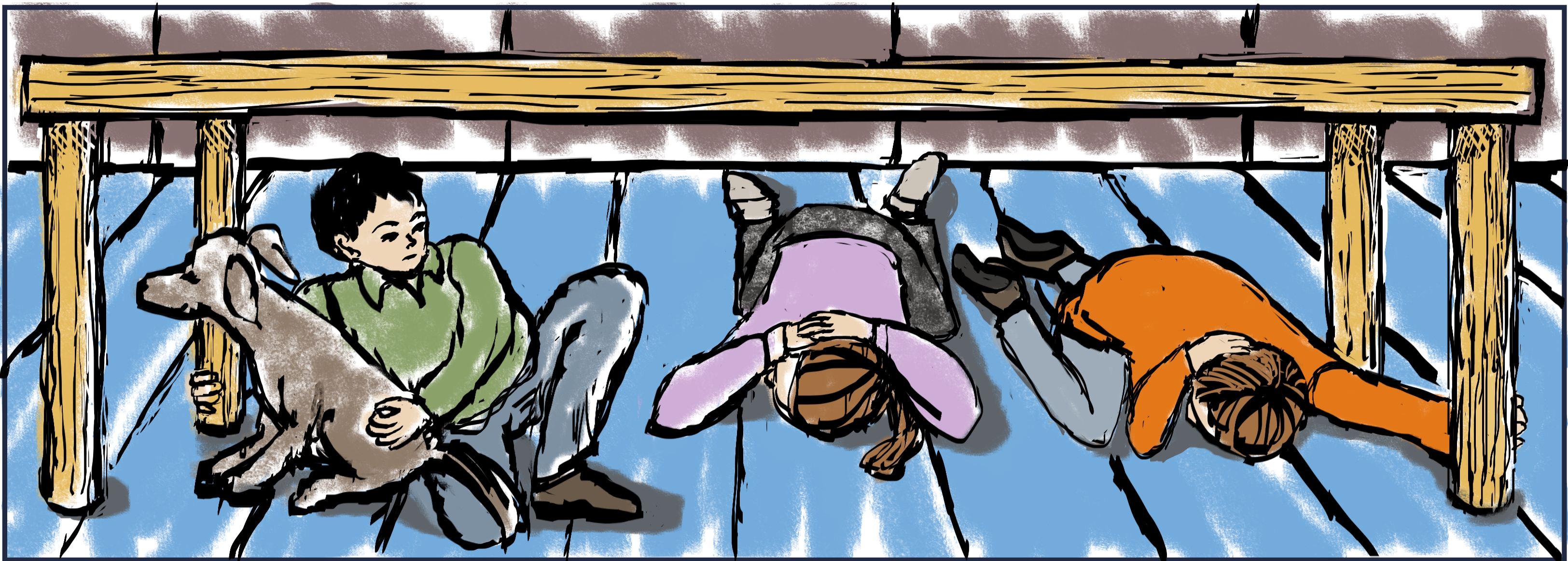
As a parent or caretaker, your first priority is to keep your children safe. Psychologists have shown that children cope more effectively with a disaster when they know there are things they and their family can do to protect themselves. Providing age-appropriate information will help them to understand what might happen and lessen their anxiety if a disaster does occur. Involving your children in the process of preparing will reduce their worries.
Children can sense topics you are uncomfortable discussing - the better prepared you are and the more willing you are to answer any questions they may have, the more secure they will feel.
Activities to get you started:
- Print out our Earthquake & Tsunami Activity Page. Encourage your children to color the pictures. Talk with them about what the pictures mean.
Read the heartwarming story of Kamome - the small boat that connected children in Japan and California. You can download the book in many languages from our Humboldt Digital Commons
Explore the My Kamome Coloring Book & the ABCs with Kamome Book
Watch the story of The Wave - a Japanese Folktale
Do an earthquake safety hunt in your home. Look for things that might fall or slide. Your children might spot things you haven’t noticed.
- Explore our new K-12 activity pages designed as a companion to Living on Shaky Ground
- Each activitiy has a version tailored to grade categories (K-2, 3-5, 6-8 and 9-12) and comes with an answer key and instruction notes.
- Earthquake vs. Tsunami Venn Diagram: grades 3-5, 6-8 and 9-12
- Crossword Puzzle: grades K-2, 3-5, 6-8 and 9-12
- Earthquake & Tsunami Terms Word Search: grades K-2, 3-5, 6-8 and 9-12
- Time to Prepare!: grades K-2, 3-5, 6-8 and 9-12
- Earthquake and Tsunami True or False: grades K-2, 3-5, 6-8 and 9-12
- Tsunami Evacuations: grades K-2, 3-5, 6-8 and 9-12
Find more activities on the Kamome Website
Three Easy Steps
Step 1: Practice “Drop, Cover, and Hold On” drills at home or at schools or preschools. Count out how long your pretend earthquake lasts - a great way to learn numbers and to help stay calm when a real earthquake strikes.
Protect yourself during the earthquake.
Step 2: Work with your child to put together a personal kit. Talk about what items should be the bit and let your child choose a stuffed toy, a blanket or a favorite book.
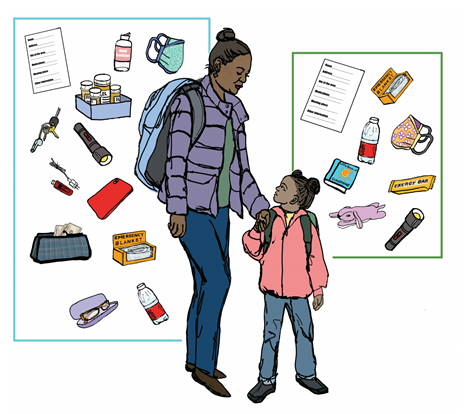
Step 3: Hold family tsunami evacuation drills. After you have done the drill a few times, let your children lead the way. The more you practice, the more familiar the process will become.
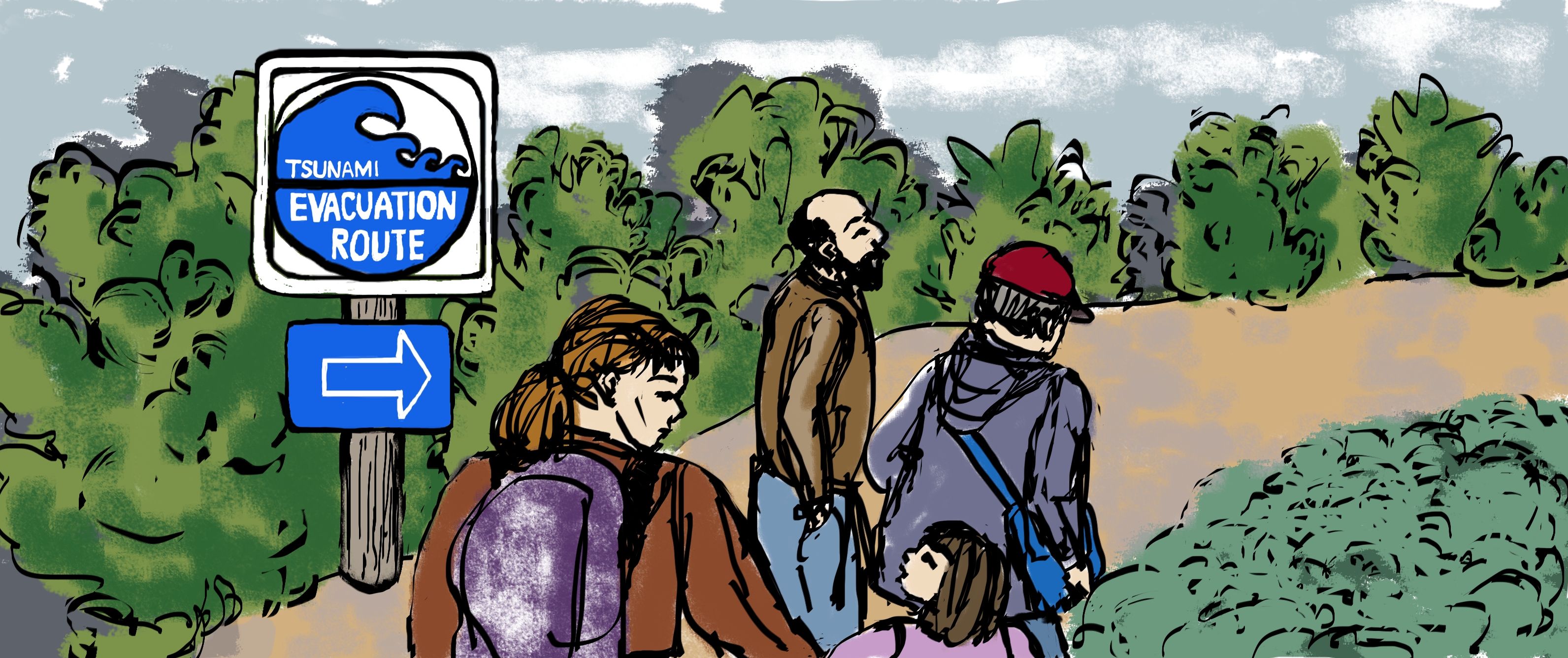
Don’t Let Fear Overtake Your Conversation
After disaster strikes, limit media coverage of the disaster - if children are going to watch television or video material, consider taping it and previewing the material. Then watch it with them so you can answer questions and help them process the information. Children (and adults) don’t benefit from graphic details or repeated exposure to disturbing images or sounds. The aftermath of a crisis is a good time to disconnect from all media and sit down together and talk as a family.
This is useful advice even if you don’t live in an earthquake or tsunami-prone area. It applies to fires, floods or other events that could affect where you live. And do you ever vacation at the beach? Visitors from 153 countries, including the United States, were affected by the 2004 Indian Ocean tsunami. Always review safety tips with family whether you are at home or abroad.
Knowledge and practice can make a big difference
Now that you’ve spent time talking to your kids about earthquakes and tsunamis, share with them the impact that knowledge can have on their lives and those around them.

Tilly Smith
On December 26, 2004, 10 year-old Tilly was on the beach in Thailand with her family. She had learned about tsunamis in school and told her parents a tsunami was coming when she saw the waves become more chaotic and the water withdraw. She and her family convinced people to evacuate the beach and the hotel manager told everyone to go to the upper floors of the building. Her quick thinking saved the lives of 100 people.
Martina Marturana
Martina, aged 12, lives on Robinson Crusoe Island off the coast of Chile. On February 27, 2010, she felt a slight earthquake that lasted a long time. She telephoned her uncle in Northern Chile who told them a massive earthquake had just occurred. She looked out the window and noticed the boats in the harbor moving in an unusual way, and ran to ring an alarm bell in the town square. She is credited with saving over 600 lives!
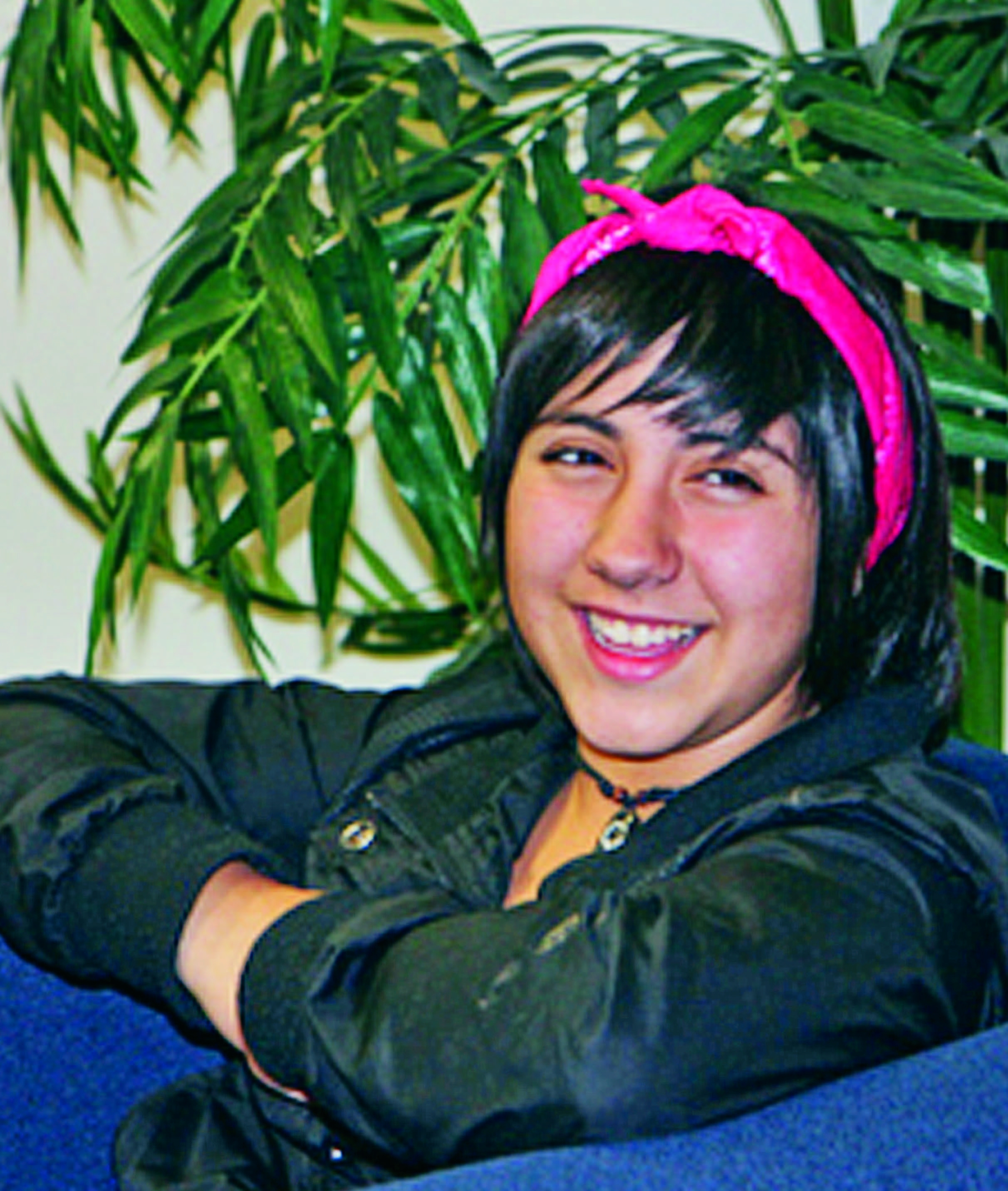
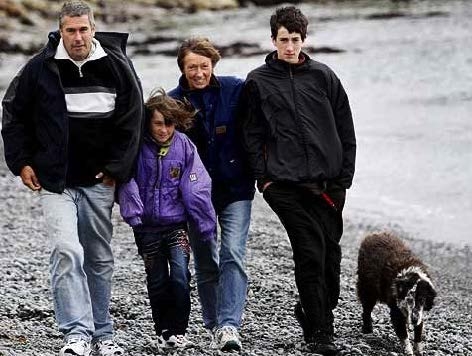
Abby Wutzler
Abby Wutzler, from Wellington, New Zealand, was vacationing in Samoa on September 29, 2009 when she noticed the ocean was withdrawing. She had been taught about the natural warning signs of a tsunami in school and ran up and down the beach yelling that a tsunami was coming. “I remember looking under my arms and seeing all these trees just crushing and being crushed in the brown water, just swirling around and killing everything in sight,” she recounted. Many other tourists credit Abby’s warning with saving their lives. For her life-saving efforts, she was presented with a certificate of commendation by New Zealand’s Ministry of Civil Defense.
Students of Unosumi and the Miracle of Kamaishi
In Kamaishi, an Elementary and Junior High School were located just outside of the mapped tsunami hazard zone. The standard procedure was to evacuate to the third floor of the school if a strong earthquake was felt or a tsunami warning was issued.
But the Junior High students were part of a special hazards education program and had been taught to:
Evaluate the situation themselves
Do as much as you can to make yourself safe
Take the lead in evacuation
After the earthquake, the Junior High students immediately headed inland to high ground. Elementary school students next door saw them and followed. The older students helped the younger ones get to a safe area and no one died even though both schools were completely destroyed.
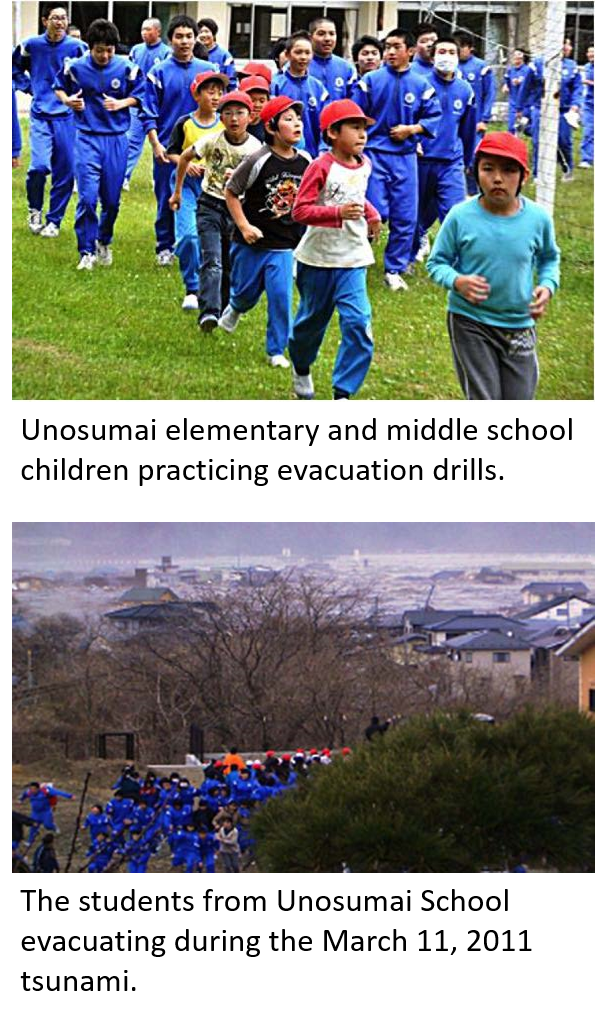
Looking for more activities to help get your kids involved in the planning process?
Visit www.humboldt.edu/kamome for educational tools and resources for all age groups and explore our printed resources, including:
Your Kids May Know More Than You Do
The Importance of Education, Tsunami Heroes & Heroines